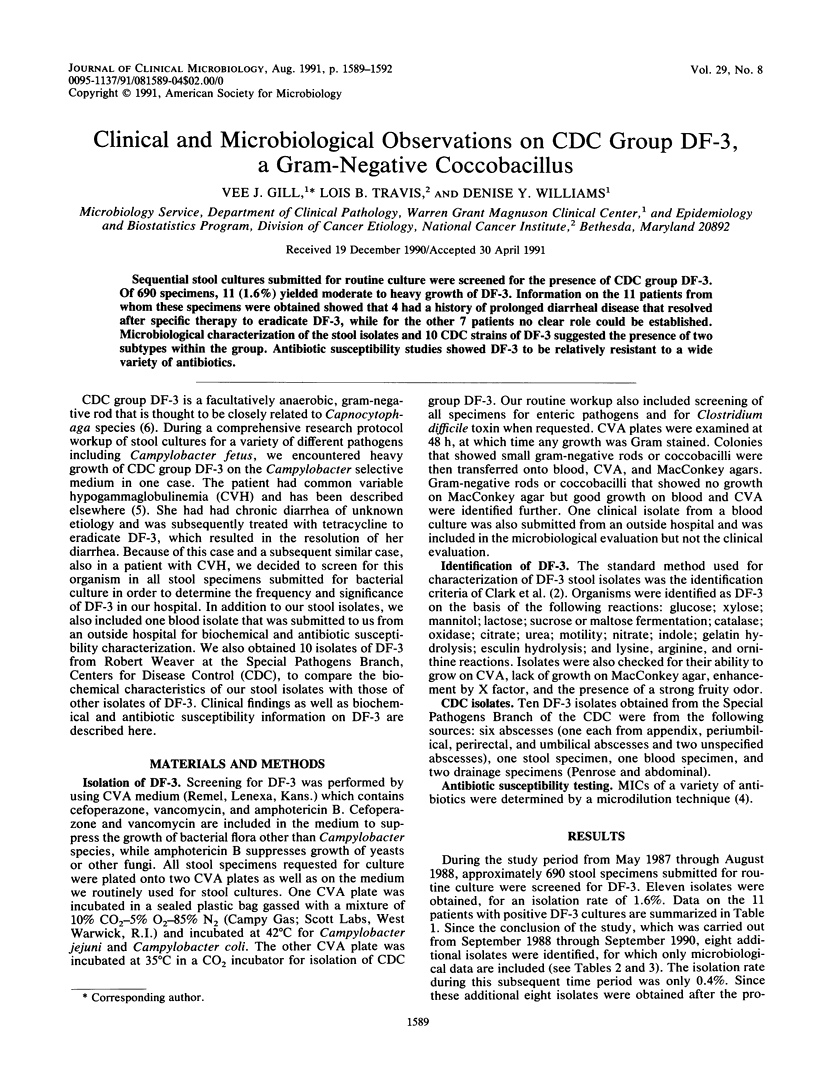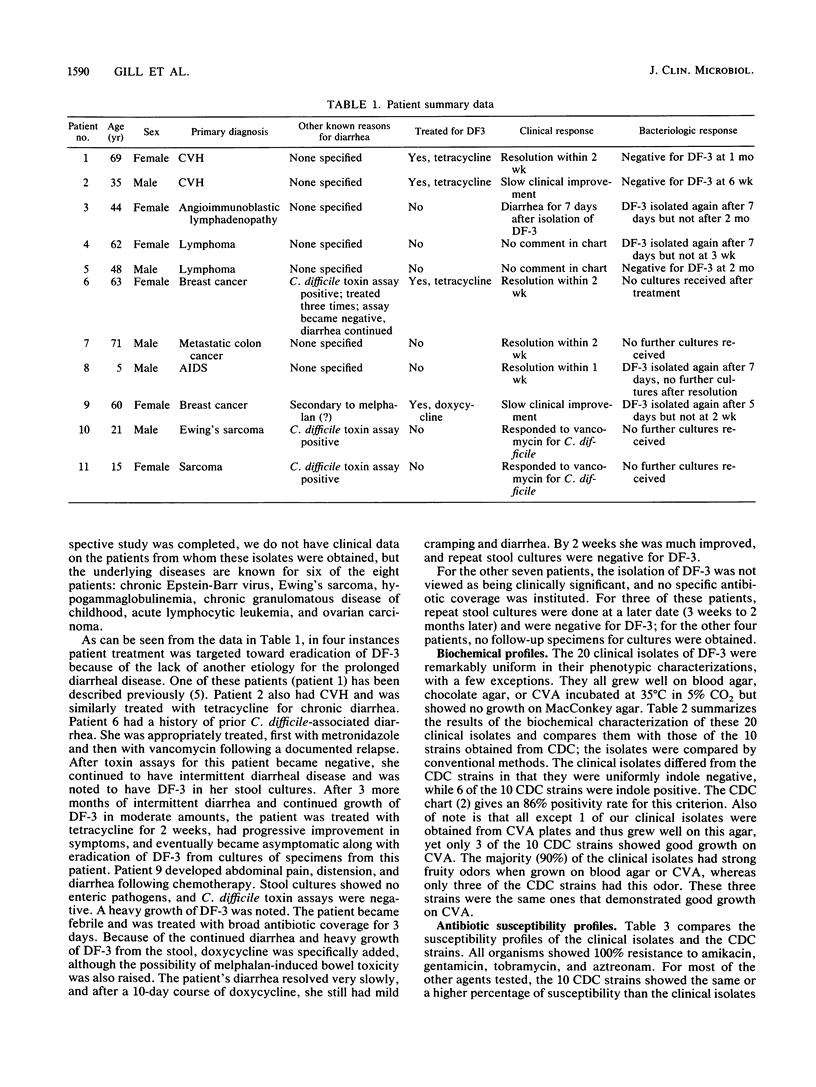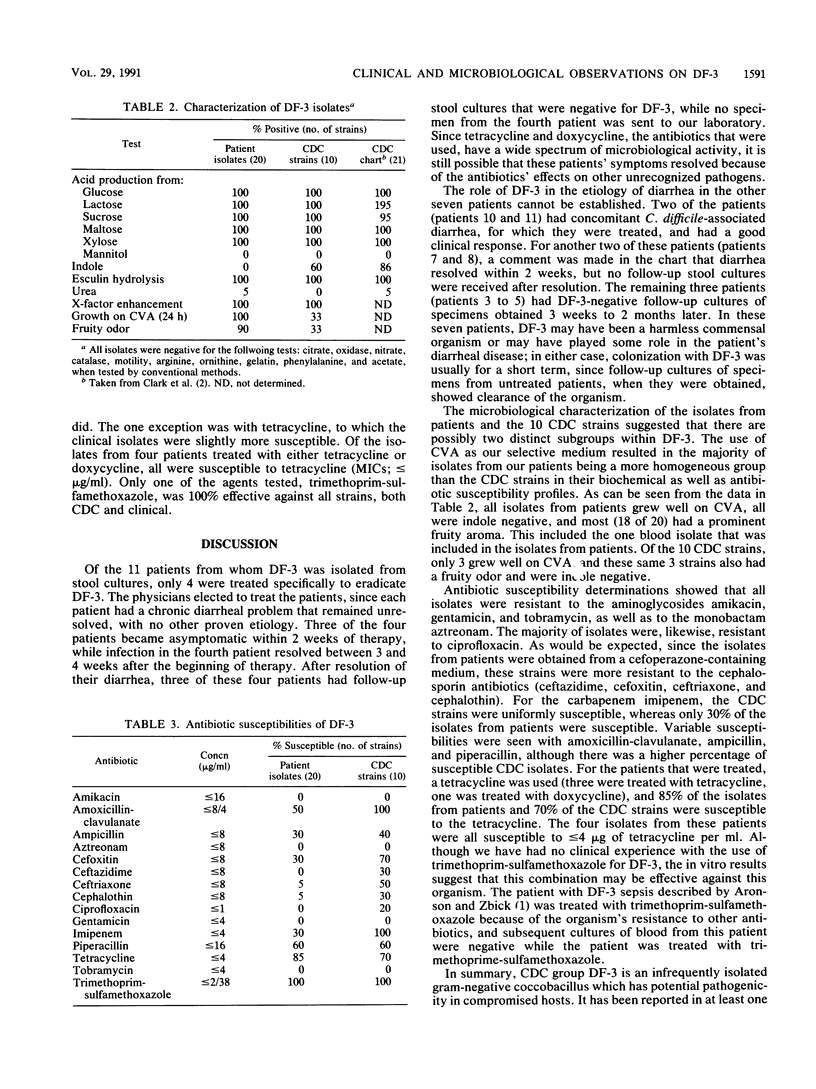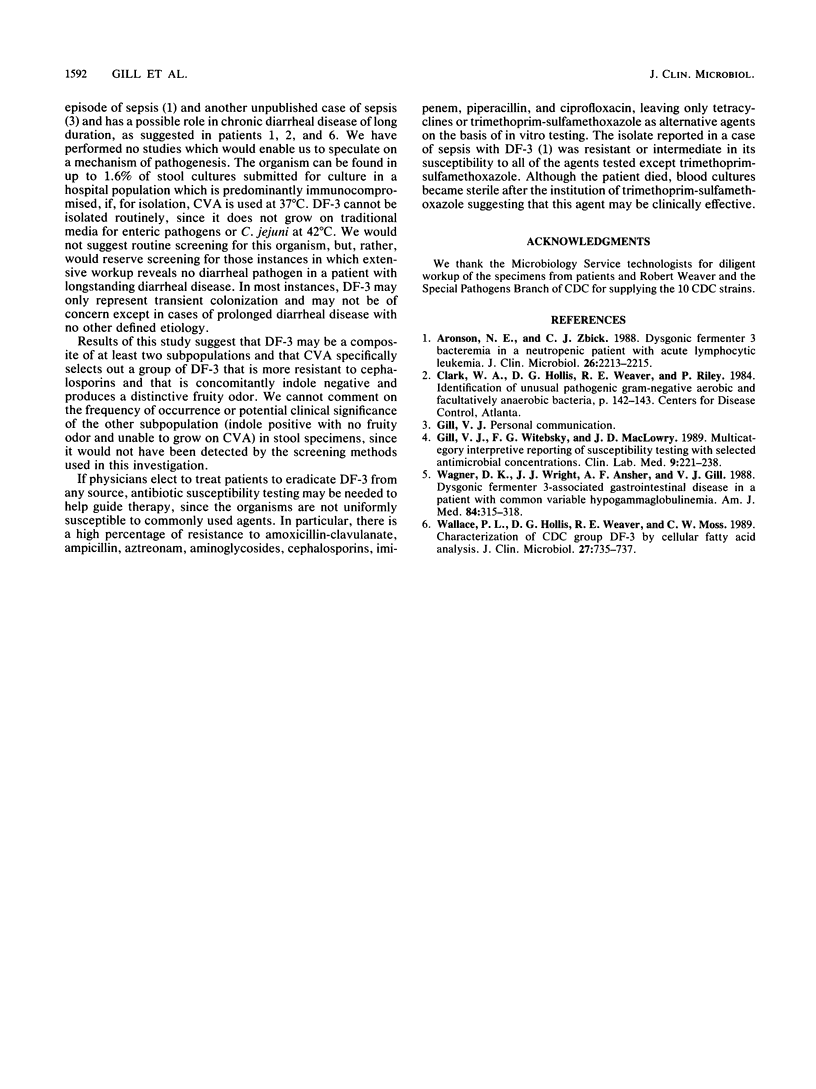Abstract
Sequential stool cultures submitted for routine culture were screened for the presence of CDC group DF-3. Of 690 specimens, 11 (1.6%) yielded moderate to heavy growth of DF-3. Information on the 11 patients from whom these specimens were obtained showed that 4 had a history of prolonged diarrheal disease that resolved after specific therapy to eradicate DF-3, while for the other 7 patients no clear role could be established. Microbiological characterization of the stool isolates and 10 CDC strains of DF-3 suggested the presence of two subtypes within the group. Antibiotic susceptibility studies showed DF-3 to be relatively resistant to a wide variety of antibiotics.
Full text
PDF



Selected References
These references are in PubMed. This may not be the complete list of references from this article.
- Aronson N. E., Zbick C. J. Dysgonic fermenter 3 bacteremia in a neutropenic patient with acute lymphocytic leukemia. J Clin Microbiol. 1988 Oct;26(10):2213–2215. doi: 10.1128/jcm.26.10.2213-2215.1988. [DOI] [PMC free article] [PubMed] [Google Scholar]
- Gill V. J., Witebsky F. G., MacLowry J. D. Multicategory interpretive reporting of susceptibility testing with selected antimicrobial concentrations. Ten years of laboratory and clinical experience. Clin Lab Med. 1989 Jun;9(2):221–238. [PubMed] [Google Scholar]
- Wagner D. K., Wright J. J., Ansher A. F., Gill V. J. Dysgonic fermenter 3-associated gastrointestinal disease in a patient with common variable hypogammaglobulinemia. Am J Med. 1988 Feb;84(2):315–318. doi: 10.1016/0002-9343(88)90432-9. [DOI] [PubMed] [Google Scholar]
- Wallace P. L., Hollis D. G., Weaver R. E., Moss C. W. Characterization of CDC group DF-3 by cellular fatty acid analysis. J Clin Microbiol. 1989 Apr;27(4):735–737. doi: 10.1128/jcm.27.4.735-737.1989. [DOI] [PMC free article] [PubMed] [Google Scholar]


